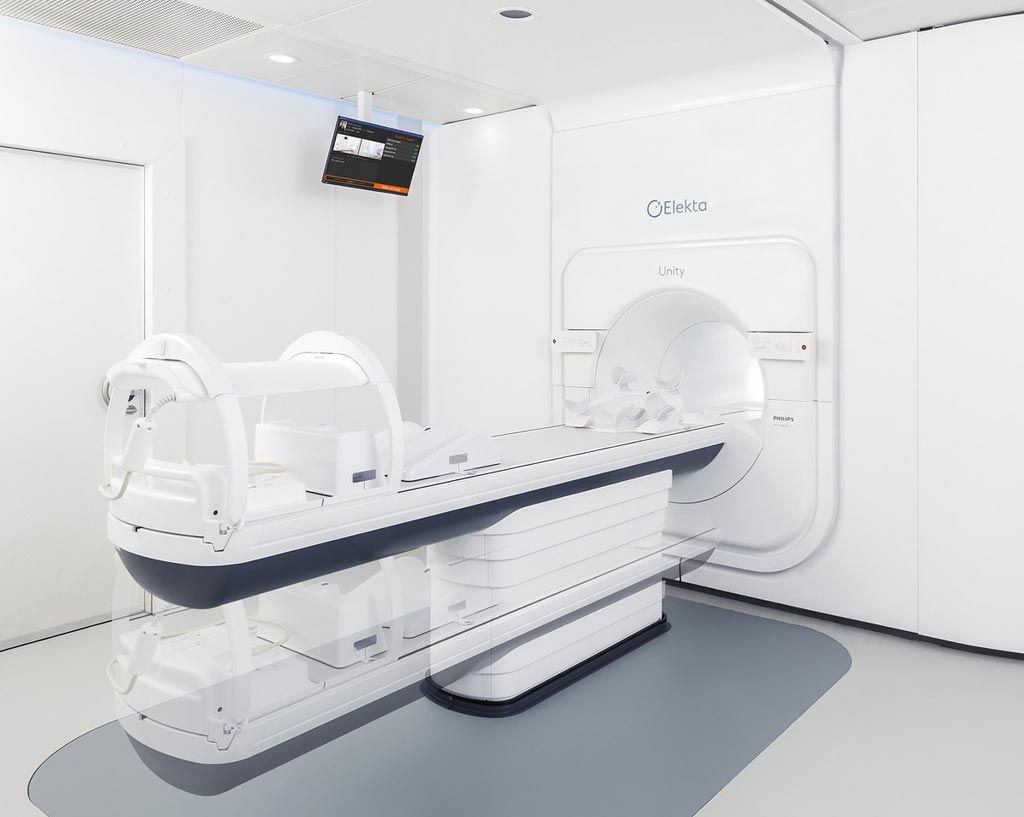New RT System Personalizes Cancer Treatment
By MedImaging International staff writers
Posted on 26 Jun 2018
An innovative magnetic resonance imaging/radiation therapy (MRI/RT) system allows clinicians to adapt the patient's RT treatment plan to current anatomical information.Posted on 26 Jun 2018
The Elekta (Stockholm, Sweden) Unity system integrates MRI, linear accelerator (LINAC) technologies, and advanced treatment planning into a single platform, allowing clinicians to see and track difficult-to-visualize soft tissue anatomies as radiation dose is being delivered. The new technology addresses an unmet need in cancer therapy by enabling clinicians to confidently track the target during treatment and respond accordingly. The core of the system is the combination of three key aspects:

Image: A new RT system integrates LINAC technology and MRI (Photo courtesy of Elekta).
• a digital LINAC equipped with multileaf collimator technology and positioned on a gantry capable of continuous rotation around the MRI scanner, with the treatment beam passing through the inner MRI ring;
• a high-field 1.5Tesla MRI imaging system made by Royal Philips (Philips; Amsterdam, The Netherlands) that allows clear, high resolution soft tissue visualization simultaneous to treatment delivery;
• Intelligent software that allows treatment plans to be adapted while the patient is on the table in response to changes in tumor position, shape, biology and the relationship to sensitive organs over time.
“Our MR-LINAC system is truly groundbreaking because it overcomes the technical barriers that have hindered the integration of radiation therapy with real-time high-field imaging,” said Richard Hausmann, CEO of Elekta. “It is the first system that provides the ability to ‘see what you treat’ with diagnostic image quality during treatment and respond based on what is being seen, offering the potential to personalize therapy for each patient.”
“Unity is a tremendous innovation in patient care, one that enables a scan-plan-treat approach to developing tailored regimens that should yield substantive clinical benefits,” said professor of experimental clinical physics Bas Raaymakers, PhD, of University Medical Center (UMC; Utrecht, The Netherlands), which invented the high-field MR-LINAC concept. “I am thrilled that our vision of personalized radiation therapy is becoming a clinical reality.”
A LINAC uses microwave technology to accelerate electrons, forming high energy x-rays that can be shaped to conform to the shape of the patient's tumor in a customized beam. The beam may be shaped either by blocks or a multileaf collimator incorporated into the head of the machine. RT can be delivered to the tumor from any angle by rotating the gantry and moving the treatment couch.






 Guided Devices.jpg)







